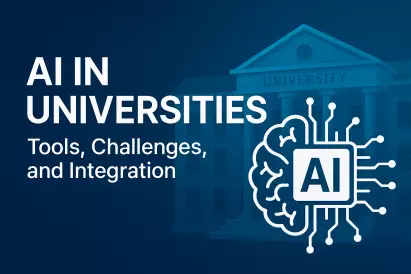Eduniversal Best Masters Ranking in Hawaii (U.S.A)
In 2025, master's degrees are increasingly essential in Hawaii’s labor market. As advanced education becomes pivotal to filling higher-skill roles, this article explores trends like interdisciplinary programs, online learning, affordability, and alignment with industry needs. It also delves into the opportunities and challenges integral to Hawaii's evolving educational and economic future.
Discover in detail the Master in Hawaii (U.S.A)
Hawaii in 2025: The Rising Importance of Master's Degrees
Master’s degrees are becoming critically important in Hawaii’s shifting economy, where the demand for highly skilled professionals continues to grow. With a forecast of 29,000 net new jobs requiring postsecondary education by 2031 and over one-third needing at least a bachelor’s degree, advanced degrees areHawaii in 2025: The Rising Importance of Master's Degrees
Master’s degrees are becoming critically important in Hawaii’s shifting economy, where the demand for highly skilled professionals continues to grow. With a forecast of 29,000 net new jobs requiring postsecondary education by 2031 and over one-third needing at least a bachelor’s degree, advanced degrees are now more than a career booster—they’re an economic necessity.
Labor and Education Landscape: Hawaii's Workforce in Transition
As of early 2025, Hawaii's unemployment rate is a low 2.9%, with monthly job openings reaching approximately 27,000. This robust labor market puts pressure on employers to find candidates with specialized skills.
In response, more residents are turning to graduate education as basic certifications like a high school diploma offer fewer job prospects. The localized emphasis on public administration and retaining homegrown talent further underlines the importance of industry-relevant advanced education.
Dominant Trends Shaping Master’s Education in Hawaii
1. Growth in Key Disciplines
Labor demand is strongly influencing the popularity of graduate disciplines in Hawaii. Students are increasingly drawn to tech-integrated fields like healthcare, education, and STEM.
There's also growing interest in cross-functional sectors that merge communications and digital technologies. Key verticals trending include public health and data-focused specializations such as data analytics.
2. Interdisciplinary and Flexible Programs
Graduate programs are evolving beyond traditional structures. Interdisciplinary learning is on the rise, targeting real-world complexity and promoting career adaptability.
Students prefer hybrid structures incorporating theoretical and experiential learning with part-time flexibility—especially attractive for working professionals and mid-career upskillers. Programs in innovation and project management exemplify this shift.
Tech-Enabled Learning: The Rise of Online and Hybrid Master’s Programs
Online and hybrid graduate offerings continue expanding across Hawaii, catering to geographically dispersed students and working adults.
These delivery models improve accessibility and reduce travel, making it possible for professionals to continue careers while earning degrees. Many learners favor these flexible formats to pursue global career skills in high-demand areas like digital marketing and cybersecurity.
Global Outlook: Internationalization in Hawaii’s Graduate Education
Hawaii is strategically positioned not only geographically but also culturally to attract international students. Graduate programs are embedding global perspectives and intercultural communications training, preparing students for success in international workforce contexts.
Areas like international management and intercultural business topics are aligning institutional goals with Hawaii’s broader economic diplomacy.
Affordability and Funding: Navigating Rising Costs
One of the biggest hurdles for master's students in Hawaii is affordability. Despite over $1.3 billion in recent federal workforce-related funding, rising tuition and limited aid create accessibility challenges.
Students are drawn to programs offering clear value and robust scholarship support while seeking cost-effective programs aligned with fast-growing sectors like corporate finance or entrepreneurship.
Evolving Student Demographics and Expectations
Hawaii’s graduate schools are seeing demographic shifts, with increased participation from adult learners and mid-career professionals.
These students prioritize career-aligned learning, flexibility, and practical application, often choosing specializations in quality management or leadership. Traditional full-time enrollment sees slight declines, while demand for work-compatible formats grows.
Challenges and Strategic Imperatives
- Affordability: Persistent tuition increases outpace funding growth, deterring underserved populations.
- Industry Alignment: Programs must match shifting market needs in areas like sustainability, tech, and healthcare.
- Quality Assurance: Increased reliance on hybrid formats calls for enhanced faculty training and new accreditation standards.
- Regulatory Barriers: As programs modernize, navigating compliance frameworks becomes crucial.
- Rapid Skill Obsolescence: Institutions must rapidly evolve curricula to match new tech and digital trends.
Future Opportunities for Advancement
To remain competitive, Hawaii’s graduate institutions are embracing transformative innovation through:
- Project-based and competency-driven learning
- Accelerated and flexible learning models
- Virtual tools like AI-based tutoring and online labs
- Public-private partnerships to ensure curriculum relevancy
- Programs focused on global awareness and intercultural fluency
Opportunities abound across fields demanding global vision and innovation, such as environmental risk management and consulting and strategy.
Discover Eduniversal Best Masters Ranking in Hawaii (U.S.A) by specialization
Latest news
Sciences Po has opened a regional hub in São Paulo, hosted by the France-Brazil Chamber of Commerce, to strengthen academic partnerships, expand research collaboration and support students and alumni across Latin America and the Caribbean.
Explore how AI is transforming universities worldwide—its tools, challenges, and the strategic steps necessary for ethical and effective integration.
Dive deep into what makes the University of Cape Town the top-ranked university in Africa in 2025, from rankings and research to student life and social impact.



